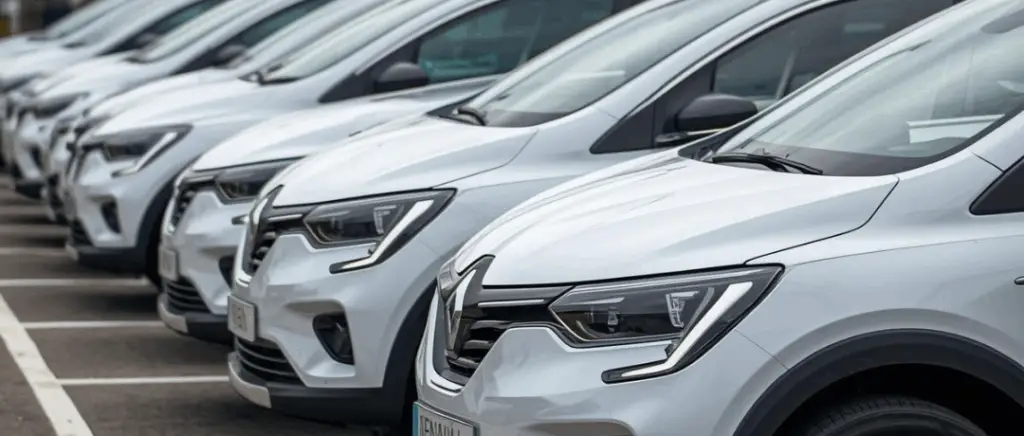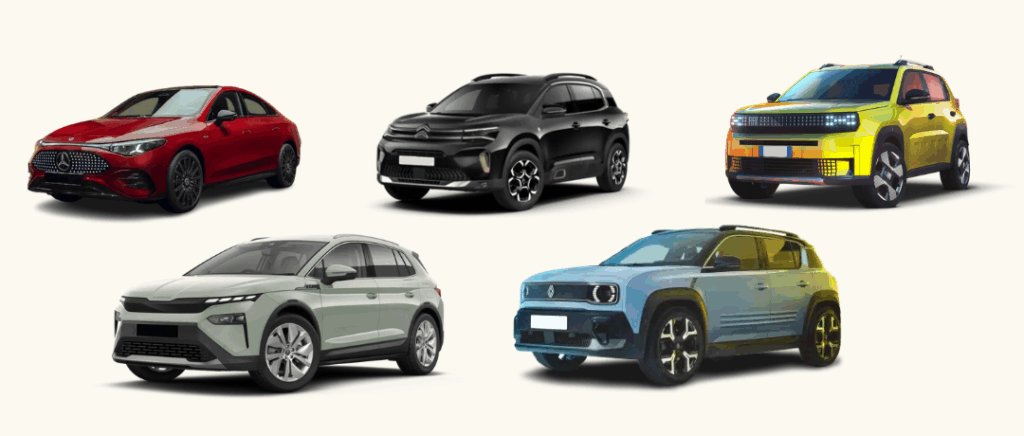Monday to Friday 9am - 12.30pm - 2pm - 7pm
Driving electric cars in high temperatures
Despite government recommendations, taking your vehicle with you when it's hot is sometimes a necessity. That's why it's important to check the condition of your vehicle before you set off, and to know what you can expect in terms of performance. But rest assured, your electric car won't let you down!
Heat and electric vehicles: what impact on performance?
Heat in the car means air conditioning. The first thing you need to know is that all electric cars are equipped with an air conditioning system, unlike internal combustion vehicles, especially the older ones. That said, by using air conditioning, you are asking more energy from your vehicle, which will have an impact on its performance. autonomy.
In a thermal vehicle, the motor powers the accessory beltwhich enables the air conditioning to operate. So when it's on, your engine has to work harder, and will lose power. So you can expect a loss of horsepower, to a greater or lesser extent, depending on the cylinder in your vehicle. This also results in extra fuel consumption of around 0.4 litres/100 km on the motorway and up to 2 litres/100 km in town, according to the Agence de la Transition Ecologique (ADEME).
On electric vehicles, the loss of range is smaller than in winter, because while heating requires an average of 3 to 4 kW, the air conditioning system only consumes 1 to 2 kW, which corresponds to 5 to 10 km less range per 100 km.
The majority of electric cars now have a reversible heat pump system, which allows your vehicle to cool down more quickly. What's more, this system allows you to offer a heating system in winter and a cooling system in summer. With internal combustion vehicles, for example, we usually start the vehicle before we actually set off to generate the cold. With your electric vehicle, you benefit from a more efficient and, above all, more economical system.
The importance of checking your equipment
There are a number of components in your vehicle that need to be checked before you set off, but particularly during a heatwave. We'll be talking about the following:
- windscreen washer fluid,
- air conditioning,
- tyres.
Firstly, you can check the level of the windscreen washer fluid. This can be useful for keeping a clear view of the road at all times. Next, you can check that your air conditioning system is working properly. It should blow cold air after a few minutes. If you notice an unpleasant smell when you use your air conditioning system, you'll need to disinfect it using an aerosol designed for this purpose. If the smell is constant, you may need to change the cabin air filter. The last thing to assess before setting off is the condition of your tyres. You can check the wear indicator in the middle of the tread to make sure your tyres have at least 1.6 mm of rubber. You can also check the tyre pressure, which should be done when the tyres are cold. For example, in the morning, after a night without driving. To find out your tyre pressure, look for it on the driver's door.
Tip: To protect your air conditioning system from bacteria, remember to turn off the air conditioning a few minutes before stopping your vehicle, leaving the fan running. This will prevent the presence of moisture in the air ducts, which can allow bacteria to proliferate. In this case, you'll need to disinfect your air ducts with an aerosol designed for this purpose.
As we said earlier, the air conditioning will be used more than usual when it's hot. So it's important to have your air conditioning system checked. What's more, you need to clean it by changing the filters, to make sure that bacteria don't develop.
Finally, tyres must be correctly inflated. An under-inflated tyre will require more effort from your engine, leading to over-consumption of fuel.
How do you recharge your car in the heat?
For most motorists, it's easier to understand how to manage their vehicle in the heat than to know how to manage their vehicle in the cold. charging stations will react to the sun. Constantly being improved, they have technical features that will enable your car to continue recharging in complete safety.
How do charging points react to sunlight?
Whether at home, in the workplace or in public spaces, the charging stations are, in most cases, installed outdoors. So it's fair to ask what impact the sun and heat have on its operation.
Its technical characteristics make the charging point extremely waterproof, resistant to wind and rain, etc. However, let's take the example of a recharging infrastructure installed in a shop car park exposed to the sun in the middle of a heatwave, the heat will have an impact on its operation.
It's worth noting that the best-performing recharging points maintain optimum capacity up to 50°.
It is therefore possible, in extreme circumstances, for the charging point limits the power delivered to the car to prevent overheating. In most cases, however, if there is a limitation, it will come from the car or from the electricity network before coming from the charging point. In extreme circumstances, the vehicle may not be able to recharge at its maximum speed to protect its battery. The network operator may also ask the terminals to limit their power, in particular ultra-fast terminals in the event of extreme weather conditions affecting the resilience of the network.
Please see our article on the fastest recharging point !
Unfortunately, this is not representative of the majority of infrastructures that are still insufficiently protected. The law on the orientation of mobility (LOM) only provides for buildings to be fitted with recharging solutions, but there is no mention of how these will be protected.
On a personal level, you can pay attention to the orientation of the sun when installing your charging pointIt is also advisable to add a roof to protect your infrastructure.
Impact on charging time
Generally speaking, your vehicle charges more slowly in cold weather than in hot weather. Battery temperature affects charging power. Batteries charge more slowly when they are cold, so heat can make charging easier and quicker. For example, to recharge at ultra-fast charging stations, some vehicles pre-condition their batteries by raising their temperature to around 50 degrees Celsius to ensure the fastest charging speed.
So could a heatwave and your car battery be a good combination? Yes, in a way, when you contrast the impact of the cold on the battery, but you have to take it with a grain of salt! If a charging point is exposed to very high temperatures, it is likely to require more energy from its system to be able to charge your vehicle. Visit charging stations are fitted with a safety system that slows down charging power as a function of temperature.
As a result, it will not be able to supply the same amount of electricity as usual, which is why it is advisable to allow more time for recharging in hot weather. Similarly, the electric vehicle will require more energy during recharging to maintain the battery at normal operating temperatures. In fact, during a fast recharging, High power tends to heat up the battery, which will need to be cooled throughout the charging session, resulting in a slight over-consumption during your charging session.
The influence of heat on lithium-ion batteries
La Lithium-ion batteryThe battery, which is also affected by the heat, has more than one trick up its sleeve. The battery, which is also affected by the heat, has more than one trick up its sleeve, enabling it to react effectively to the heatwave.
The role of the cooling system
In the vast majority of electric car models, you have a cooling system which, as its name suggests, allows your battery to cool itself. In other words, if your vehicle starts to heat up in an unusual way, this system is activated and allows the battery to cool down. By having this cooling circuit, you benefit from a device dedicated solely to this task.
But not all cars benefit from this system. To name just one, the Nissan Leaf drops in temperature autonomously, i.e. exclusively thanks to the air. As a result, your vehicle will be more prone to overheating than those fitted with a cooling system. Overheating has no major consequences in absolute terms, with no risk of breaking down on the motorway or elsewhere. However, over the long term, your battery will wear out more quickly than one that has its own cooling system.
Battery capacity and condition
As we saw earlier, temperatures influence the condition and life of your battery. To give you an order of magnitude, above 50 to 70°C, the Lithium-ion batteries can be irreversibly damaged. However, this heat can be external (heatwave), but also internal (from the use made of the vehicle). Which brings us back to the importance of the cooling system.
An electric battery has a lifespan of between 10 and 20 years, which means you can keep your vehicle for a number of years. However, being able to keep it for 20 years instead of 10 is a significant advantage. That's why, by adopting eco-driving practices and paying attention to the charging of your vehicle, the battery can increase its life expectancy.
Also read: "how do you save the battery in an electric car?"
Steps to take
Having looked at all the consequences you can expect to have on your electric car as a result of the heat, we're going to give you a few simple tips to apply that can preserve your vehicle.
We therefore recommend :
- avoid strong and repeated acceleration,
- if possible, drive early in the morning or at the end of the day. This way, the sun will have less impact on your car, so your range will be less affected by the air conditioning system.
- give preference to shaded parking areas,
- open the windows and start driving like this for a while before switching on the air conditioning. This allows the air to circulate more easily and avoids over-consumption of your air conditioning system.
These simple steps will help you to improve the performance of your electric car even in very hot weather. So you'll lose less autonomy in the heat.
You now have all the information you need to enjoy your journey with complete peace of mind! Don't hesitate to let us know what you think!
































